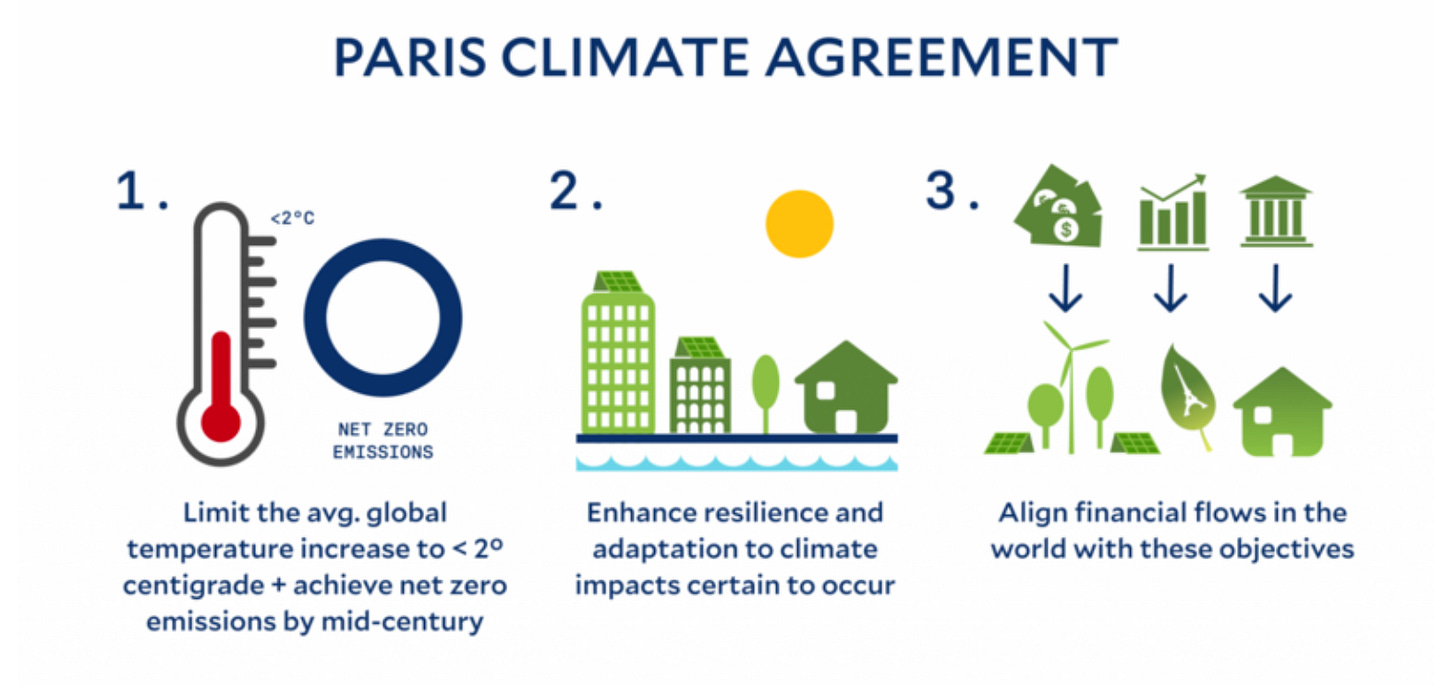Tracking the Invisible from Space: Greenhouse Gases. Part 2: Private Sector Solutions.
Unveiling the future of GHG emissions monitoring: a deep dive into private GHG sensing satellite missions and projects - are we doing enough?
Issue No 32. Subscribers 5574. Featuring a quote from the President and Founder of Kayrros.
Greenhouse gas (GHG) remote sensing has evolved with the increasing involvement of the private sector, which has played a crucial role in monitoring specific gases emitted from point sources. The use of Artificial Intelligence (AI) in startups has led to the development of innovative solutions to analyze satellite data and integrate it with ground or drone measurements. This article aims to explore private GHG sensing satellite missions and projects in detail.

The Importance of Monitoring Greenhouse Gas Emissions
Greenhouse gas emissions are major contributors to global climate change, and monitoring these emissions is crucial. Remote sensing provides a unique opportunity to monitor greenhouse gas emissions on a global and local scale. Satellites can measure GHG concentrations over large areas, including remote and inaccessible regions of the planet. In the previous part of this article, we focused on publicly-funded missions such as Sentinel or GoSat, which provided a comprehensive understanding of the distribution and behavior of GHGs in the Earth's atmosphere. These missions played a vital role in identifying sources, distribution, and trends of Greenhouse gases (GHGs), and contributed to suggesting measures such as the Paris Agreement to mitigate climate change.
Many companies that emit GHGs recognize the financial risks associated with emissions and take their GHG accounting seriously. They work to either eliminate or offset the carbon impact of their projects. Satellite data on GHG emissions has become a crucial component of financial reporting. This data is used to monitor emissions from specific sources such as power plants, industrial facilities, and farms, allowing for the identification of emission hotspots, and leaks, as well as tracking changes over time.
Private space technology companies have emerged to fill a niche in the market, providing faster, on-demand access to emission data for specific hotspots, offering higher spatial resolution than publicly-funded missions. The various projects we will discuss today are complementary, as they often focus on different greenhouse gases or types of emitters.
Private Sector Innovations in GHG Sensing
During the 2000s, national space agencies held a near-monopoly in the realm of space-based GHG monitoring. However, advancements in electronic components, the introduction of smallsats and cubesats, and progress in data processing technologies have democratized the field. Between 2011 and 2020, state institutions were responsible for over 70% of all GHG-sensing satellite launches. Since 2021, this proportion has declined to approximately 40%, reflecting a more diverse landscape of participants in space-based GHG monitoring.
The number of GHG sensing missions remained relatively limited until 2020, so the industry did not require substantial investment. Between 2009 and 2020, activity ranged from 2-5 transactions per year. However, 2021 marked a record year for the sector, with 9 transactions totaling $577 million in investments. This surge was primarily due to the initial public offering (IPO) of Planet Labs, which operates the largest Earth observation satellite network. While Planet Labs does not directly provide GHG emissions tracking services, it serves as the main technological partner for the Carbon Mapper consortium—an effective GHG leak detection service that we will discuss later in this article.
Founded in 2011, Canadian company GHGSat was the first private satellite GHG emission monitoring firm and has since attracted over $100 million in total investments. The company operates six small satellites that collect facility-level methane emissions data, with plans to launch an additional six satellites in 2023 and 2024. GHGSat provides emissions information to industrial companies, the financial services sector, and governments. The company specializes in detecting methane super-emitters, such as the 43-tonnes/hour leak in Turkmenistan in 2019, and the Nord Stream 2 disaster in September 2022, which released up to 79 tonnes/hour (in comparison to the global average of 21,000 tonnes/hour of methane emissions). In 2020, GHGSat launched Pulse, a free global data visualization tool for methane emissions.
GHGSat's direct competitor, the US-based Orbital Sidekick, plans to launch six satellites this year, following the successful deployment of their Aurora demonstration platform in 2021. The satellites will serve various applications in the energy, mining, and defense sectors, including monitoring oil and gas pipelines, mapping methane emissions, exploring energy resources, supporting sustainable mining practices, and reducing the risk of wildfires.
MethaneSAT, an American-New Zealand joint venture, is another private company aiming to become a major player in the GHG monitoring field. They plan to launch a single satellite in 2024, which they believe could help reduce methane pollution by 45% by 2025. This ambitious target is considered achievable because a significant portion of methane emissions—industrial leaks—are relatively easy to eliminate once detected.
Bluefield, a private company based in the United States, plans to launch its satellite constellation in 2023. The company's business model focuses on providing satellite data for methane (CH4), carbon dioxide (CO2), and nitrous oxide (N2O) emissions to stakeholders in the oil and gas sector, as well as government agencies, environmental groups, and insurance companies interested in monitoring the progress of companies in reducing their GHG emissions.
While the aforementioned companies compete in the methane leak detection market, they can be considered complementary to one another. Some offer a wide-angle perspective, while others provide a more zoomed-in view of specific emission sources, allowing for a comprehensive understanding of methane emissions at various scales.
European companies SATLANTIS from Spain and ISISpace from the Netherlands are partners in large public-private projects GEI-SAT and TANGO, respectively. The latter plans to launch its own separate satellite constellation into orbit in 2024. Aerospacelab and Scepter, while not yet operating their own constellations, are already significant players with their data analysis platforms and (prospectively) Low Earth Orbit satellite-based sensors. Scepter incorporates an array of ground-based and airborne sensors into its comprehensive data platform. These technologies enable the detection of methane (CH4), carbon dioxide (CO2), and nitrous oxide (N2O).
Among European startups preparing to launch their own constellations is the German company Airmo, which has developed a micro-LiDAR solution in addition to spectrometer-based measurements, significantly improving the accuracy and sensitivity of CO2 and CH4 measurements.
The Emergence of AI-Assisted Greenhouse Gas Monitoring Systems
GHG emissions are commonly assessed using either bottom-up or top-down approaches. The bottom-up method calculates total emissions by summing the emissions from individual components, while the top-down method measures the overall concentration of GHGs in the atmosphere.
The bottom-up approach relies exclusively on emission factors for energy components, but it often underestimates the actual amount of GHGs released into the atmosphere. This is because most large emission events occur during atypical conditions, whereas emission factors typically account for emissions during normal operations.
To effectively monitor and manage GHG emissions, a robust monitoring system must integrate frequent measurements, expansive geographic coverage, and high sensitivity to accurately capture a substantial portion of emissions. As a result, services that aggregate and analyze GHG emission data from various sources are increasingly cost-effective and offer a more accurate representation of total GHG emissions.
We recently spoke with Dr. Oleg Demidov, COO and Co-founder of Carbon Space, an Ireland/US-based company that develops an AI-powered platform to monitor greenhouse gas data. We inquired about the most common data analysis techniques utilized in the field of GHG emissions. Oleg highlighted a diverse range of techniques currently employed in the industry to assist with satellite GHG data processing algorithms and atmospheric modeling.
These include:
Radiative transfer modeling, which detects different wavelengths, aids in the understanding of the interaction between radiation and the atmosphere.
Retrieval algorithms for vertical distribution of gases, such as optimal estimation, maximum likelihood, and Bayesian approaches. These are techniques we use to find out how different gases are spread in layers in the air above us.
Data fusion techniques like the Kalman filter or ensemble-based methods are employed to integrate data from various sources.
AI and machine learning techniques, such as regression models, neural networks, decision trees, and clustering, are commonly used to analyze and process data.
Time series analysis for identifying trends and changes in GHG emissions over time.
Spatial analysis methods, including interpolation, kriging, spatial autocorrelation, and hotspot analysis, are utilized to pinpoint areas with high emissions and find patterns in the locations and relationships of things on a map.
Emerging opportunities for analyzing open remote sensing datasets are being realized through cutting-edge AI technologies. Kayrros, a global asset observation platform, exemplifies this advancement. The platform combines satellite imagery, geolocation data, textual information, and other unconventional sources, utilizing machine learning, natural language processing, and advanced mathematical techniques. This integrated approach enables the measurement of natural GHG fluxes and industrial activity on a worldwide scale.
We had a conversation with Antoine Rostand, President & Founder of Kayrros, regarding his perspective on market development. He emphasized that, for businesses to maintain a competitive edge, they must harness the wealth of data generated by satellites in tandem with cutting-edge artificial intelligence. Kayrros provides insights to an impressive clientele, including top-tier Financial Institutions, Energy Operators as well as Governments and Regulators.

Hybrid missions, which involve partnerships among public, private, and not-for-profit organizations, are gaining prominence. These collaborations aim to capitalize on the unique strengths of each participant, merging complementary capabilities to measure GHG at various scales and develop robust data management systems. Examples of such partnerships include CarbonMapper and Climate TRACE.
Apart from the organizations mentioned, numerous startups do not utilize GHG sensing, such as Descartes Labs and Hummingbird (which was aqcuired recently by Agreena). These companies rely exclusively on AI-driven analysis of satellite imagery. The innovative approaches employed by these startups warrant a dedicated discussion in a separate article.
GHG Monitoring Satellites: Significant Progress Made, Yet More Efforts Needed
Climate TRACE recently published a report revealing that 50% of the largest global GHG emission sources are oil and gas production facilities. These emissions have been significantly underestimated, in part, due to insufficient reporting requirements and consistent underestimation of methane emissions from both intentional flaring and leaks. Climate TRACE discovered that emissions from top oil and gas-producing countries, which report their data to the UN, are up to three times higher than self-reported figures. This finding underscores the crucial role GHG sensing plays in protecting our planet.
Satellite monitoring systems still face challenges in modeling the processes responsible for distributing GHGs in the atmosphere. Although recent advancements have achieved high-resolution detection of gas concentrations down to individual industrial facilities, there remains an incomplete understanding of GHGs' involvement in corresponding biogeochemical cycles (natural processes that involve the movement of elements or compounds through different components of the Earth's system, including the atmosphere, hydrosphere, biosphere, and geosphere). These cycles are highly complex, and as a result, the net impact of anthropogenic (human-caused) emissions can only be estimated within the context of the entire system. High uncertainty persists in regions with significant GHG activity, such as oceans, tropics, and high northern latitudes. To address this uncertainty, it is essential to establish a more advanced surface (as well as airborne) system for calibrating and validating the results of space-based measurements.
Although there are 30+ constellations for GHG monitoring and numerous startups dedicated to analytics, the sector remains in the early stages of development. Over 5,000 companies have already pledged to reduce their GHG emissions by 2030, but there is still much work to be done. You can find a niche for your startup by focusing on specific areas, enhancing AI, refining atmospheric models, and integrating various data sources to offer a comprehensive solution. If you are currently operating a startup in this sector or planning to launch one, please feel free to contact us at alexandra@spaceambition.org.










